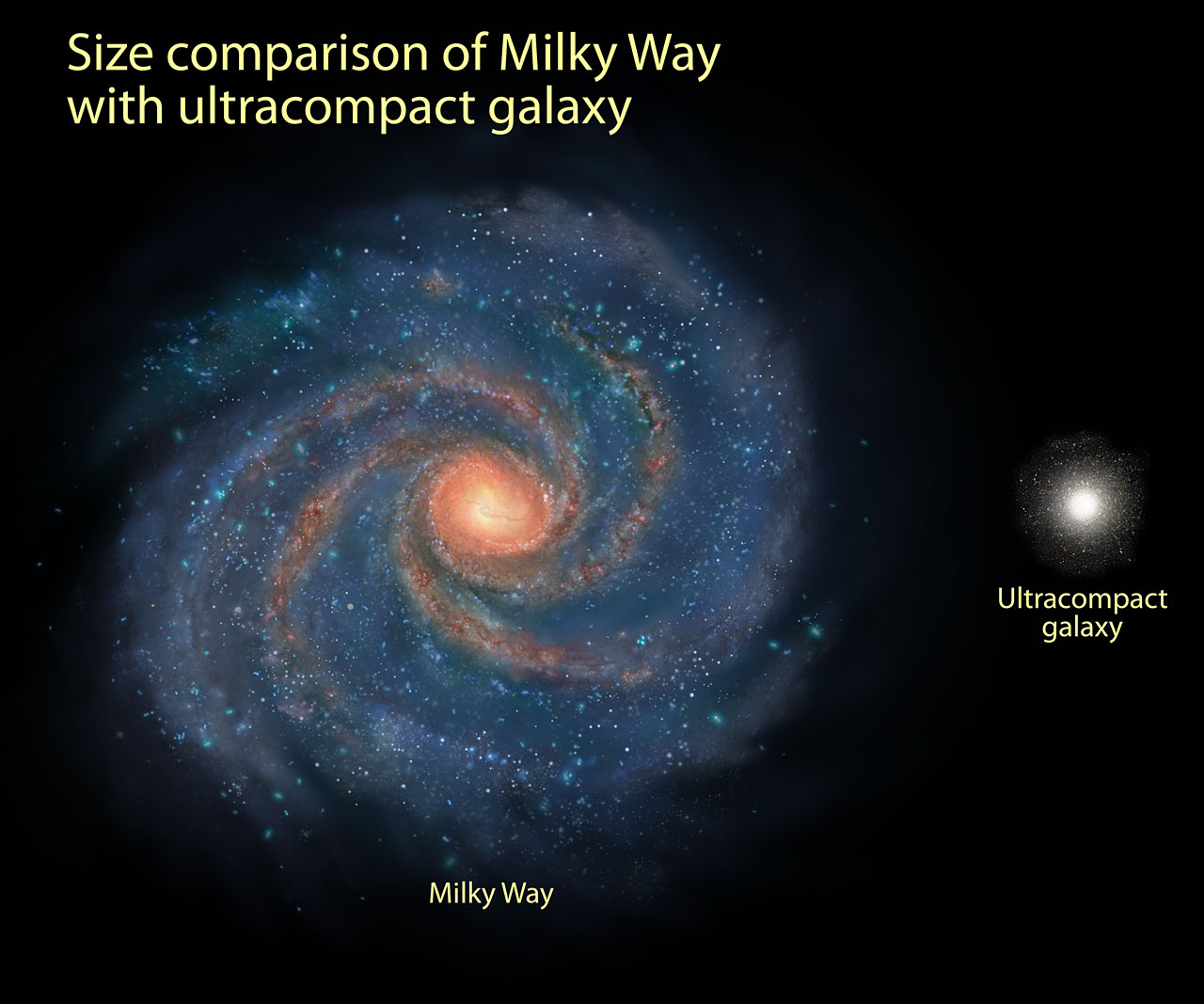Astronomers looking at galaxies in the universe’s distant past were surprised to find some compact, very young galaxies that have masses similar to a mature, grown-up galaxy. Using the Hubble Space Telescope, astronomers discovered nine small galaxies, each weighing in at 200 billion times the mass of the Sun. The galaxies, each only 5,000 light-years across, are a fraction of the size of today’s adult galaxies but contain approximately the same number of stars. Each galaxy could fit inside the central hub of our Milky Way Galaxy.
Using the Hubble in conjunction with Keck Observatory in Hawaii, astronomers were able to study the galaxies as they existed 11 billion years ago, when the Universe was less than 3 billion years old.
“Seeing the compact sizes of these galaxies is a puzzle”, said Pieter G. van Dokkum of Yale University in New Haven, Connecticut, USA, who led the study. “No massive galaxy at this distance has ever been observed to be so compact. These galaxies would have to change a lot over 11 billion years, growing five times bigger. They could get larger by colliding with other galaxies, but such collisions may not be the complete answer. It is not yet clear how they would build themselves up to become the large galaxies we see today.â€
To determine the sizes of the galaxies, the team used the Near Infrared Camera and Multi-Object Spectrometer on Hubble. For the Keck observations, a powerful laser was used to correct for image blurring caused by the Earth’s atmosphere. Only Hubble, Keck and ESO’s Very Large Telescope are really able to measure the sizes of these galaxies as they are very small and far away.
The ultra-dense galaxies might comprise half of all galaxies of that mass 11 billion years ago, van Dokkum said, forming the building blocks of today’s largest galaxies.
How did these small, crowded galaxies form? One way, suggested van Dokkum, involves the interaction of dark matter and hydrogen gas in the nascent Universe. Dark matter is an invisible form of matter that accounts for most of the Universe’s mass. Shortly after the Big Bang, the Universe contained an uneven landscape of dark matter. Hydrogen gas became trapped in pockets of the invisible material and began spinning rapidly in dark matter’s gravitational whirlpool, forming stars at a furious rate.
Based on the galaxies’ mass, which is derived from their color, the astronomers estimated that the stars are spinning around their galactic disks at roughly 400 to 500 kilometers per second. Stars in today’s galaxies, by contrast, are traveling at about half that speed because they are larger and rotate more slowly than the compact galaxies.
The astronomers say that these galaxies are ideal targets for the Wide Field Camera 3, which is scheduled to be installed aboard Hubble during upcoming Servicing Mission 4 in the fall of 2008.
Original News Source: European Hubble Space Telescope Homepage


“The galaxies … are a fraction of the size of today’s adult galaxies but contain approximately the same number of stars.”
Is this an accurate statement? Isn’t it more accurate to state that these compact galaxies appear to have the same MASS as today’s galixies? To my knowledge, we have no way to count the stars in these distant galaxies. So the best we can do is compute their apparent mass, then divide by the mass of the sun to get an estimate of the number of stars. This assumes that the sun represents the “average” mass of stars, which may be a pretty weak assumption for stars in galaxies 10 billion years ago.
Now that’s a surprise. I assumed that galaxies, without absorbing other galaxies, stayed about the same size. I wonder if angular momentum gained from central black holes sucking up matter has something to do with it.
We have a mystery. I wonder if this fits or readjusts a current model or does it lead to development of new models for this endlessly fascinating universe of ours?.
I could hear dozens of galaxys cry out “Mama” at the sight of the picture.